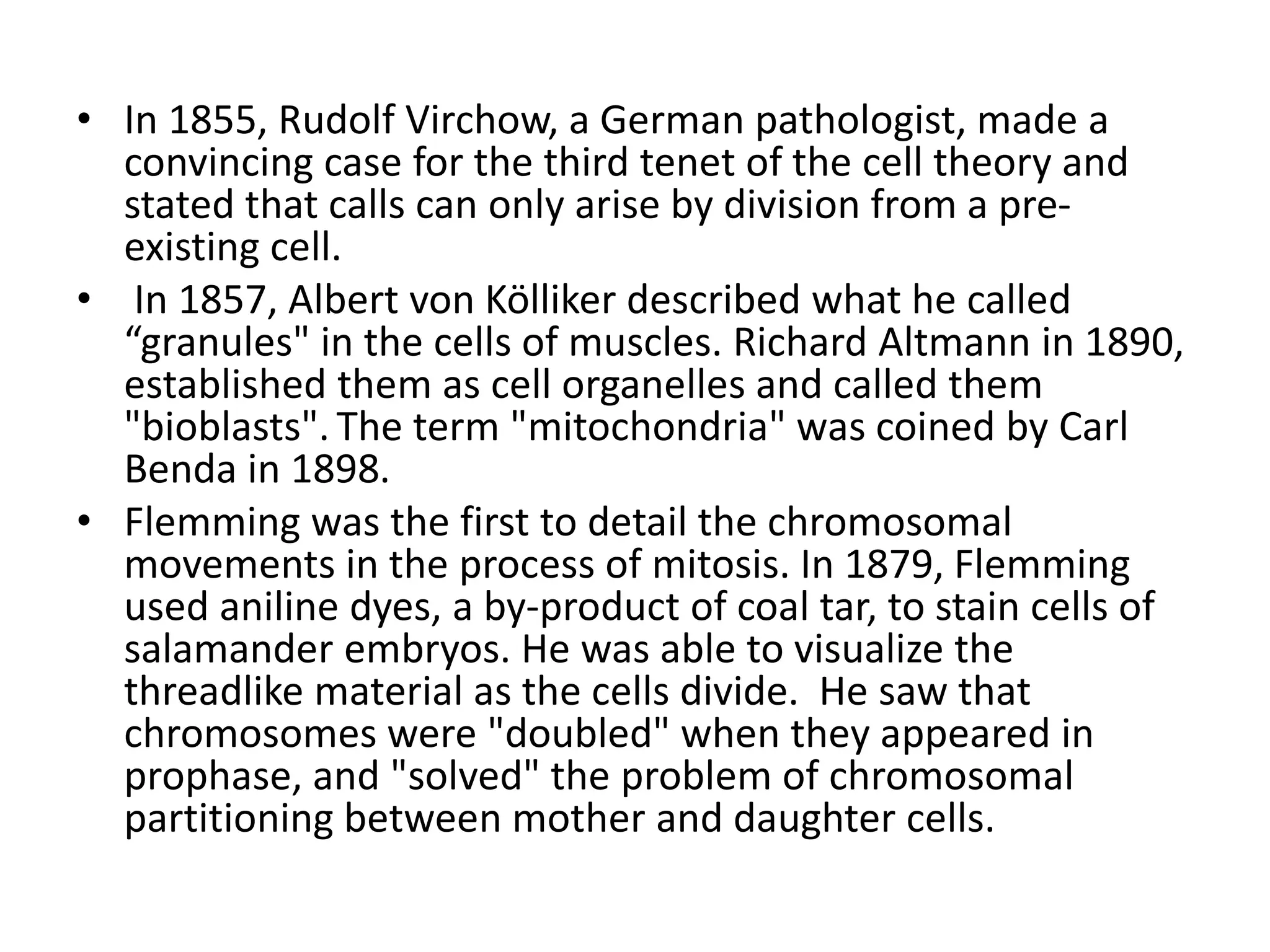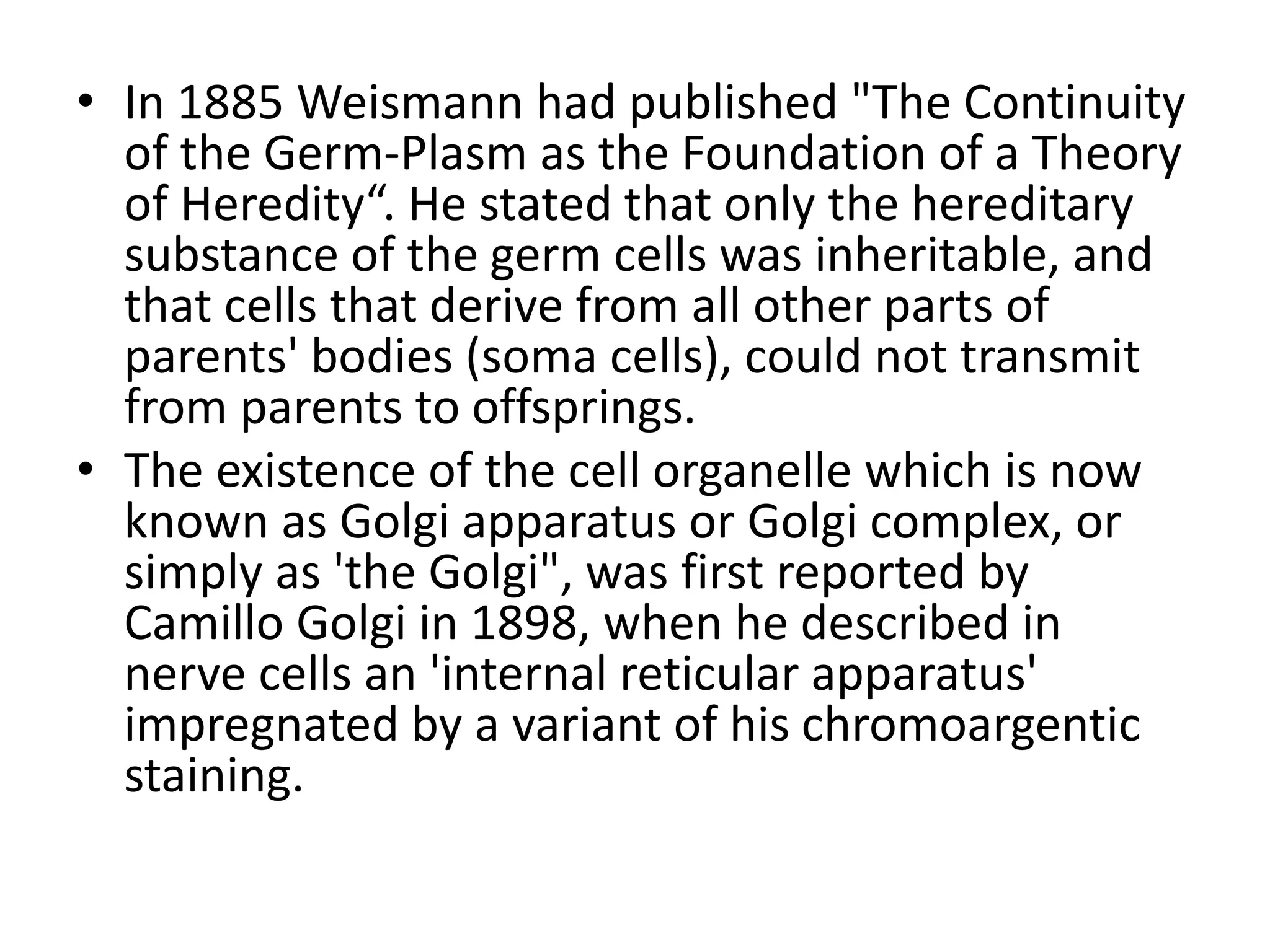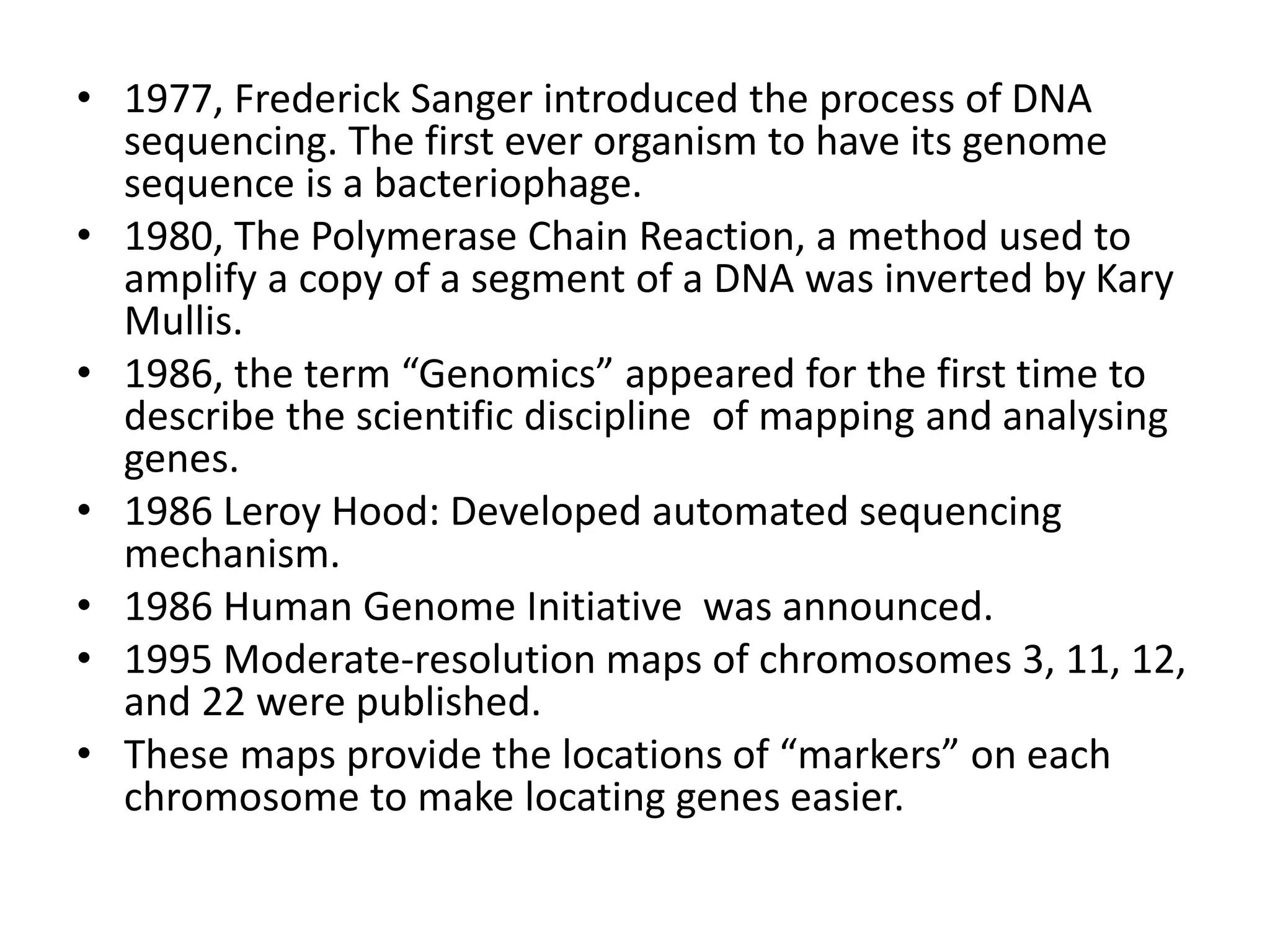- Cells were first observed under a microscope in the 1600s by Robert Hooke and Anton van Leeuwenhoek. Hooke coined the term "cell" after observing plant cell walls, while Leeuwenhoek observed microorganisms.
- In the 1830s, scientists Matthias Schleiden and Theodore Schwann established the foundations of the cell theory: that all living things are made of one or more cells, and cells are the basic unit of life.
- Advances in microscopy and staining techniques in the late 1800s allowed scientists like Flemming to observe cellular structures and processes like mitosis and meiosis in more detail.












